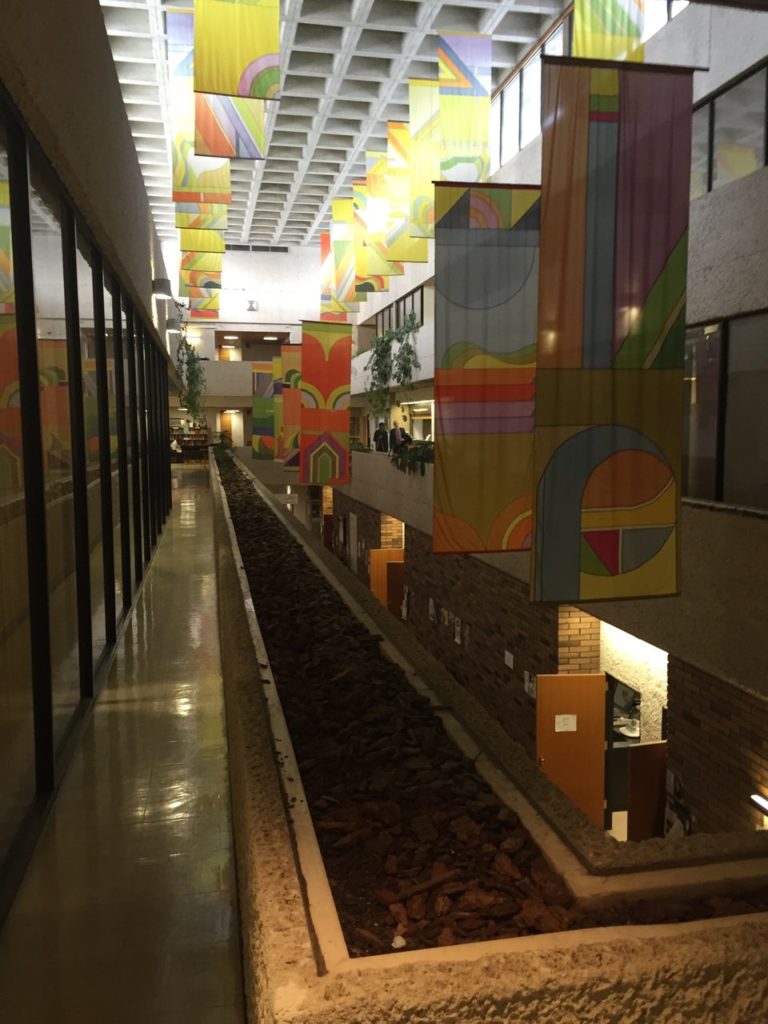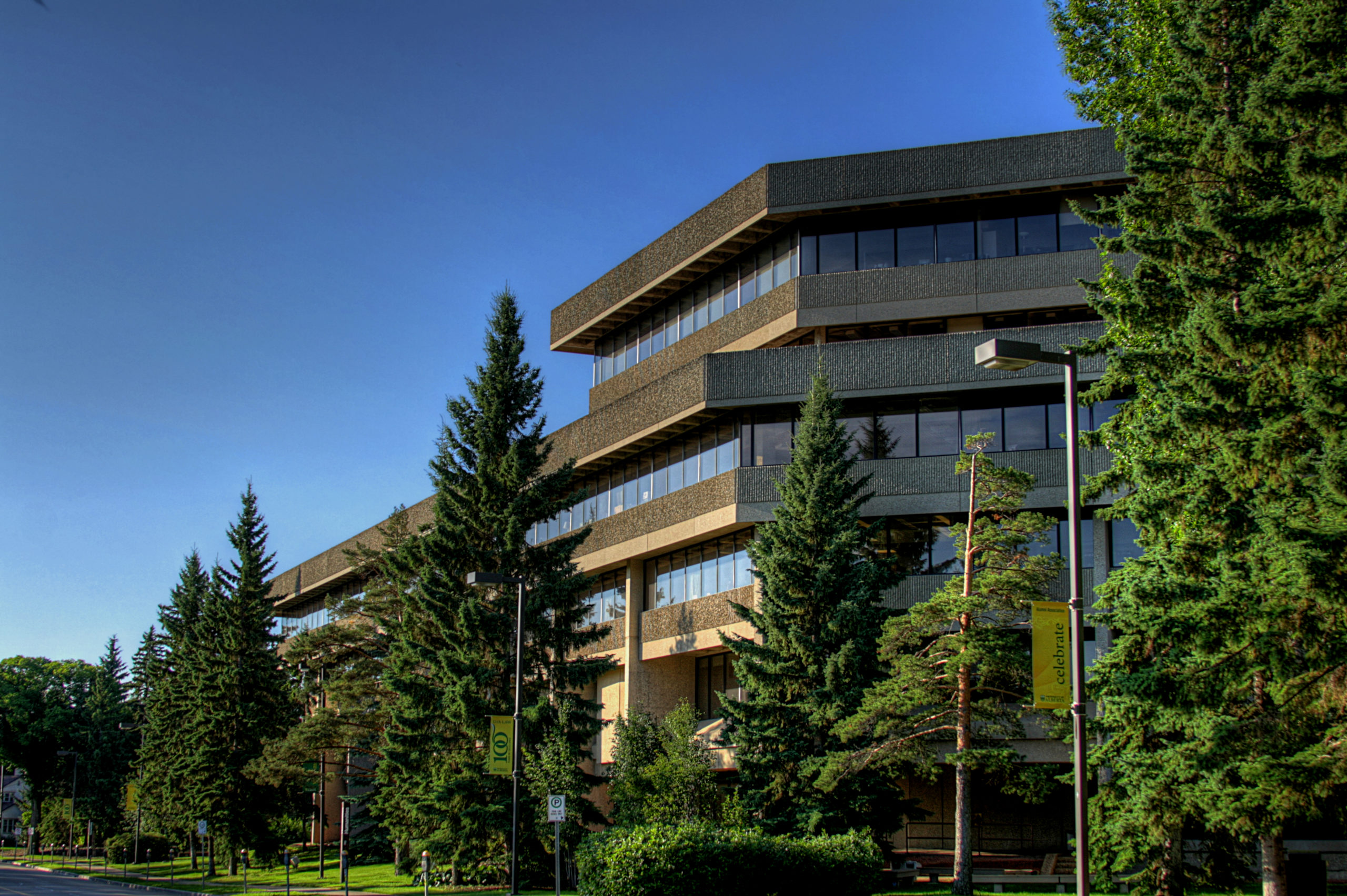National Trust Endangered Places List – Special Climate Crisis Edition
On the eve of Earth Month, the National Trust for Canada is bringing attention to the connection between climate and heritage conservation by naming a handful of places facing demolition to the Endangered Places List. Trashing structures and their materials is a luxury that Canada can no longer afford. With the climate emergency and biodiversity loss the most pressing issues of our time, and the Worldwatch Institute estimating that the planet will have run out of many raw building materials by the year 2030, every decision about the future of an existing building needs careful scrutiny.
Heritage and climate advocates can agree that the loss of these places would send a strong message about the premature obsolescence and disposability of existing buildings – regardless of heritage status, age or personal taste. Without action, people, places and planet are at increasing risk of devastating climate impacts.
The University of Alberta (U of A) is currently on an unprecedented demolition spree. Spurred by huge provincial cuts to university funding beginning in 2019 and its desire to remove deferred maintenance liability ($865 million in 2020) from its books, the university has demolished hundreds of thousands of square feet of buildings since 2019: Alumni House (1929); the vast 380-unit Michener Park student housing complex (1967); the four historic Ring Houses (1912-14, included on National Trust Endangered Places List 2021); and the Dairy Barn or Faculty of Agriculture, Life, and Environmental Sciences Museum (1930). The Administration Building (1957) and Humanities Centre (1972) are next to face the wrecking ball, with more rumoured to follow. The Humanities Centre, designed by renowned Edmonton architect John McIntosh, is a striking Brutalist structure in the inverted ziggurat style, with light-filled atriums, boldly textured finishes, and expressive features like a circular lecture hall pod.
In April 2022, the Times Higher Education Impact Rankings named the U of A as one of the world’s top 15 most sustainable post-secondary institutions for its ongoing efforts creating sustainability on campus and beyond. Instead of discarding buildings, the University of Alberta should be demonstrating climate leadership by adapting its legacy public assets.

Why it matters:
Trashing these structures and their building materials is a luxury that Canada can no longer afford. With the climate emergency and rapid biodiversity loss the most pressing issues of our time, and the Worldwatch Institute estimating that the planet will have run out of many raw building materials by the year 2030, every decision about the future of every existing building needs careful scrutiny.
Canada shamefully leads the world in per capita garbage production – 36.1 tons per person (the US is at #3 with 25.9 tons) – with construction and demolition waste estimated to be at least 27% of our waste stream. An estimated 2,752,000 tons of wood CRD waste, much of it irreplaceable old-growth lumber goes into landfill. Vancouver for instance saw 23,485 of 68,000 single-family homes in the city demolished between 1985 and 2014.
The construction and building operation sector is the world’s largest single source of energy use and emissions – 39 percent of the carbon footprint worldwide – and offers the opportunity for dramatic decarbonization returns. While most carbon mitigation efforts focus on reducing emissions from building operations (28% of emissions), the carbon in building materials represents 11% of embodied emissions. The greatest GHG and environmental impact reductions can be achieved by extending the life of existing buildings and reusing them in situ – “the greenest building is the one that already exists” – and creating new durable buildings capable of adapting to new uses over time. Rewards would not only include carbon emission savings, but also the avoided impact of resource extraction on natural heritage and Indigenous cultural landscapes. Canada has a vast carbon sink of older or heritage buildings to maintain and capitalize upon. In contrast, studies have established that it takes up to 80 years for a new “green” building to overcome the carbon impacts of its construction. Without action, people, places and planet are at increasing risk of devastating climate impacts.
What needs to change:
We are in the midst of a climate crisis and immediate action is paramount. Canada needs policies that will have immediate positive impacts on GHG emissions – and also create jobs and a strong economy. The recycling and re-use of existing buildings, our largest consumer good, offers an exceptional and largely ignored opportunity to achieve these goals.
However, building reuse is still not the norm in Canada, with resource- and carbon-intensive demolition and construction of new buildings offering the path of least resistance for the construction industry and for buyers. The barriers to reuse take many forms, including:
- Regulatory barriers – zoning, planning regulations, and prescriptive rather than performance-based building codes can stifle reuse and drive neglect;
- Physical or Technical barriers – building rehab costs inflated by deferred maintenance, or limited availability of heritage professionals to reveal reuse opportunities and reduce risk;
- Cultural barriers – construction industry practice is biased to new construction, and the real estate market practice perpetuates premature building obsolescence; and
- Economic barriers – obtaining bank financing for adaptive reuse can be challenging, and property tax and income tax treatment spur demolition.
Disincentivizing demolition and accelerating building reuse and retrofit through financial incentives, stricter demolition permit review, and the requirement for Whole Life Carbon Accounting (WLCA) in development decisions, offers a crucial pathway to achieving Canada’s climate goals. Spurring the reuse and retrofit of older/heritage buildings also reduces the impact on the environment (including Indigenous cultural heritage) of unnecessary resource extraction.
Recommended actions:
All citizens can take action in our communities. Ask your municipal councilor about new tools to make building reuse the new normal, such as: curbing “as a right” demolition permits and strengthening demolition review policies; prioritizing materials conservation by requiring deconstruction if demolition is unavoidable; creating more building reuse incentives, including priority planning approval for reuse projects; creating vacant building by-laws that spur owners of derelict buildings to invest or divest.
Governments, Institutions, and the Private Sector can ensure that the material value of older buildings is recognized, and climate impact of building reuse versus new construction duly considered, by requiring Whole Life Carbon Accounting (WLCA) in their laws, regulations, and policies affecting construction and demolition.
Federal and Provincial-Territorial Governments can contribute significantly to Canada’s decarbonization goals by correcting biases in their tax systems that make premature building demolition attractive. For example, the federal government can update terminal loss, capital gains, and recapture of depreciation provision. Provincial-territorial governments should address property tax measures encouraging demolition.
The Federal Government can introduce a new tax incentive modelled on the US Federal Historic Preservation Tax Incentive to encourage the private sector to invest in the rehabilitation and reuse of older and heritage buildings.
Location: Edmonton, Alberta
Endangered Places List: 2023
Status: Endangered

